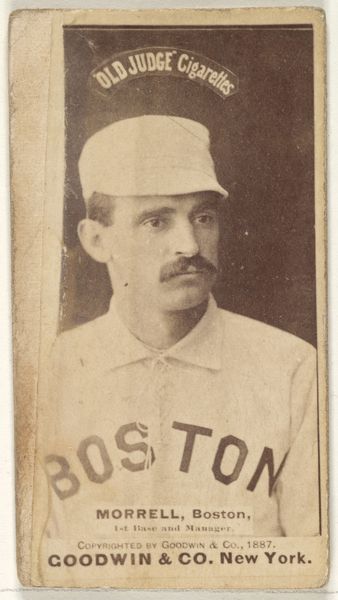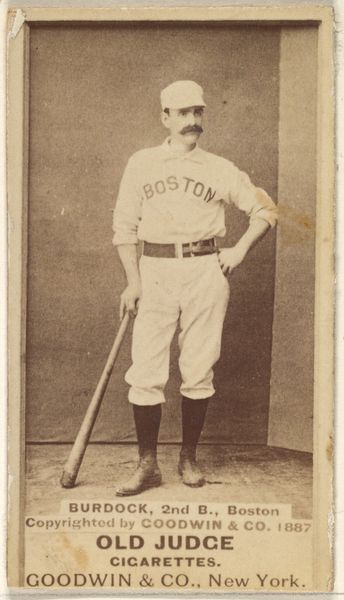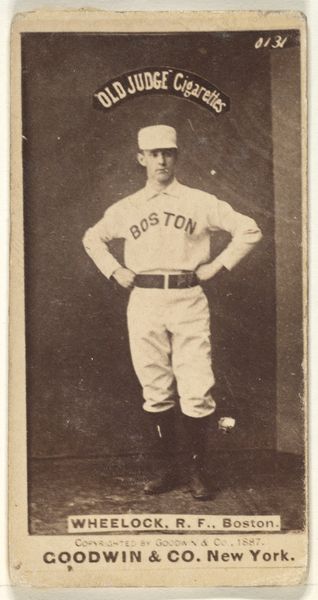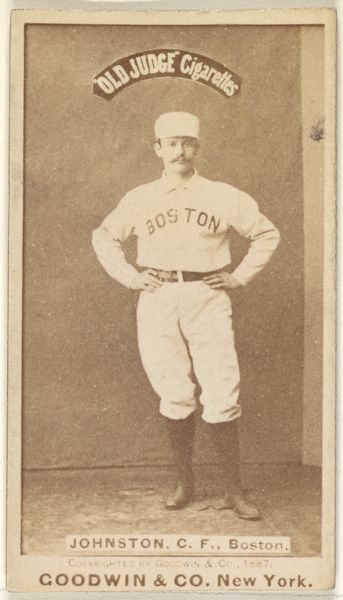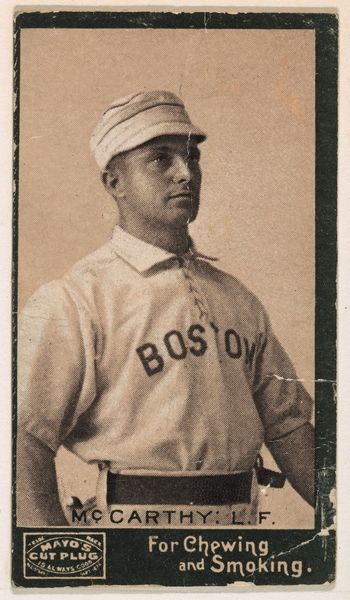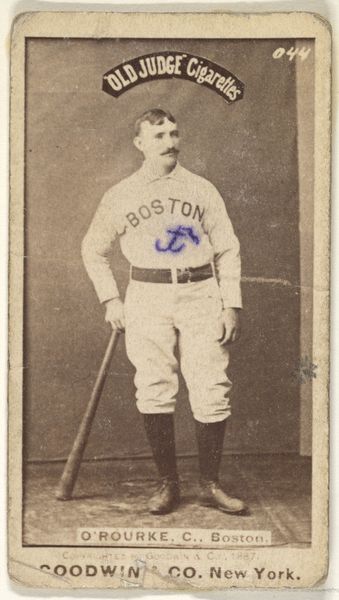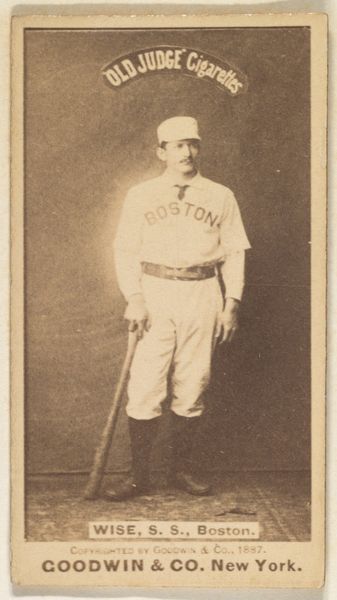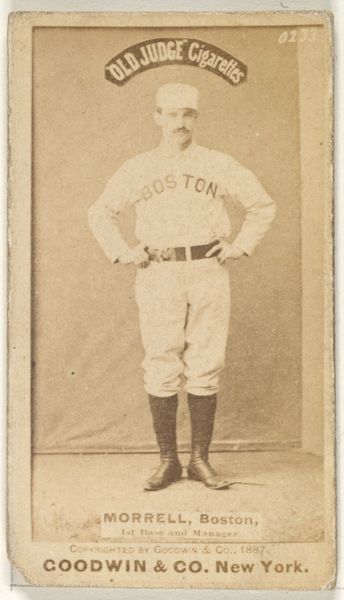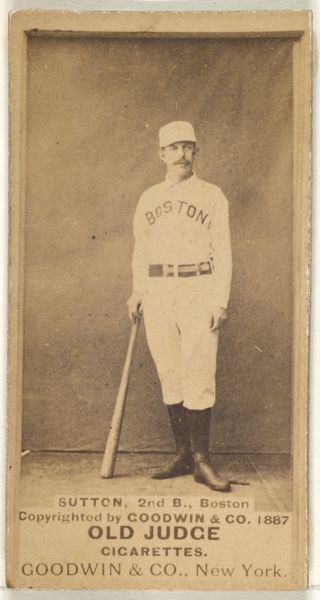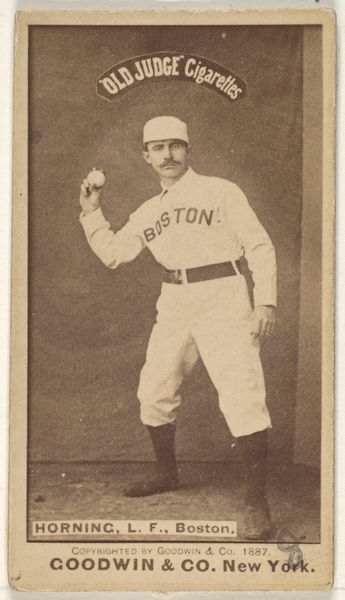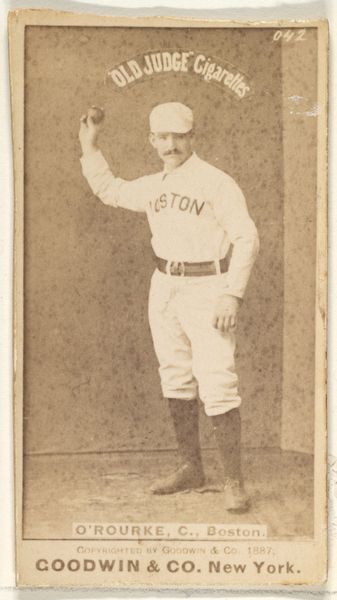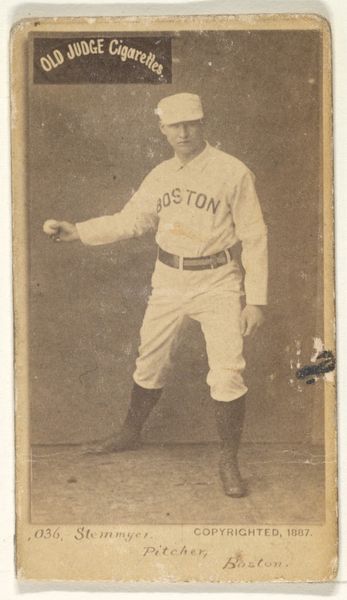
Billy Nash, 3rd Base, Boston, Mayo's Cut Plug Baseball series (N300) 1895
0:00
0:00
Dimensions: Sheet: 2 13/16 × 1 5/8 in. (7.2 × 4.1 cm)
Copyright: Public Domain
Curator: This is an 1895 portrait card, one of the Mayo's Cut Plug Baseball series featuring Billy Nash, the third baseman for Boston's team at the time. It's a printed photograph. What’s your first take? Editor: Immediately, I am struck by the sepia tones; a washed-out melancholy permeates the image. This card is also selling an idealized form of masculinity – cleaned up, packaged with tobacco. What is the significance of Nash’s pose? Curator: It's a straightforward, static pose. The photographer centered him. The baseball cap almost blends with his skin, while the dark letters of "Boston" stretch across his chest, dividing the space geometrically. It's a no-nonsense composition, prioritizing clarity. Editor: But think about baseball during the 1890s. Labor movements were growing, cities were expanding rapidly, and anxieties about industrialization were everywhere. By showcasing a popular athlete in this format, doesn't this card subtly encourage an association of Nash with strength and prosperity? Curator: Perhaps, but that connection isn't explicitly represented in the image. Structurally, the limited tonal range forces one to focus on the figure, as do the constraints of space, yet Nash himself is fairly relaxed and approachable, given the nature of portraiture during the time. It almost seems as if his sternness is the product of expectation for a professional photo than how he might normally present. Editor: And even the words "For Chewing and Smoking" at the bottom speak volumes about the marketing of baseball to working-class men who chewed and smoked as leisure, but also due to necessity, as players were also members of the workforce beyond their position. How else might Nash be working or positioned among his Boston peers at the time? How do immigrant players or players of color factor into this picture of health and sport? The photograph's quiet surface hides complex histories. Curator: Your reading pulls fascinating sociopolitical elements into focus. I see a stark visual record – its success relies on symmetry and defined shape. But you're right to emphasize what the picture neglects, it also reinforces what late-nineteenth-century portraiture prioritized as valuable, which included its exclusion of varied experiences. Editor: Indeed. Images are powerful not only for what they display but for the larger contexts of what they are saying to contemporary issues and concerns.
Comments
No comments
Be the first to comment and join the conversation on the ultimate creative platform.

